The Rufus King Mansion, more properly, King Manor, stands on Jamaica Avenue and 153rd Street in Queens. It was originally built in 1730 along the main route to Brooklyn Ferry at the foot of today’s Fulton Street, which became the extremely lengthy Jamaica Avenue/Jericho Turnpike/Middle Country Road and a variety of other routes combined under the NYS Route 25 banner.
In 1805, Rufus King (1755-1827), who was born in what is now Maine but was then part of Massachusetts, bought and expanded the property to its present appearance. King was a youthful representative at the Continental Congress from 1784-1786 (signing the Constitution), a US Senator from New York in 1789, a Minister (Ambassador) to Great Britain from 1796-1803 (where he impressed the still-hostile Brits after the close of the Revolutionary War), a US Senator again from 1813 to 1825, and ran unsuccessfully for President as a Federalist against James Monroe in 1816. King, an ardent opponent of slavery, argued: “I have yet to learn that one man can make a slave of another and if one man cannot do so, no number of individuals have any better right to do it.”
King Manor became a museum in 1992. It features period room settings, including objects owned by the King family; public events and concerts are held periodically. Archeological digs on the grounds have revealed much about life in Jamaica in the early 1800s. Roy Fox, the Manor’s caretaker, gives building tours and is an ardent historian, providing animated discourses on King’s life and the history of the building (tours can be booked here; note that the building closes in January).
In December 2013, I wandered around Jamaica in the area King must have frequented, and noted area highlights that would no doubt have amazed King: nothing but his house remains from his era, though there are some fairly aged buildings around. I got off the Q65 bus at Hillside and 164th and proceeded south and west — my wanderings ended at Kew Gardens, but the complete walk will be split over several pages.

There’s a fairly amazing building at Hillside Avenue that seemingly gets no notice or press anywhere. This was the first Jamaica High School, completed in 1896 by an unknown architect; when it was built, taking up a whole block between 162nd and 163rd, it was a K-12 school but was thought to be too large. Those suspicions were quickly proved false and the school filled rapidly and the auditorium was divided into additional classes. The present Jamaica High, on Gothic Drive and 168th Street was built in 1927 and is an impressive edifice in its own right: see it on this FNY page.
You can see a Dutch influence in the gable and stepped pediment. The gable supports three dormers with ‘witch’s hat’ ornaments that it appears you could cut yourself on! The building currently houses the Queens satellite High School for Opportunity.
From The Beaver Book, a fascinating history of Jamaica High School (which seems to have gone offline since I first linked to it). The book takes its name from the now-filled-in Beaver Pond, just south of downtown Jamaica: the school mascot is a beaver.
There is a certain High School out in old Jamaica Town
Of all the schools we’ve ever known she most deserves renown
Her boys are strong and manly and her girls are beyond compare
And Royal Red and Loyal Blue are the colors that they wear
In gym, on track, on diamond her honor we maintain
In oratory and debate for her fresh laurels gain
Her fame’s upheld by song and play, for loyal each and all
We rally to defend her name and gather at her call
Then cheer for old Jamaica High, the school without a peer
We’ll cherish long the memory of the days we’re spending here
Prosperity be always hers, courageous purpose high
And loyal love attend her and fame that shall not die

Some attached homes, likely pre-1920, with interesting “crowns.”
Dominican Commercial was one of the premier business schools for girls in all of New York City through the mid-1970s. Students followed a course of study that prepared them to enter full-time work after high school in clerical, secretarial and administrative assistant roles. The school had a very successful placement program with the top firms of the city. As the need for and popularity of Commercial high schools waned from the 1970s onward, Dominican Commercial shifted to more of a college preparatory program, but a dwindling enrollment and difficult location forced its closure in 1998. History of Catholic Schools in the USA
The Dominican Order motto in Latin, Laudare Benedicere Praedicate, “to praise, to bless, to preach” can still be seen above the front entrance. The Dominican Sisters maintain a presence here in the handsome building, which opened in 1936.

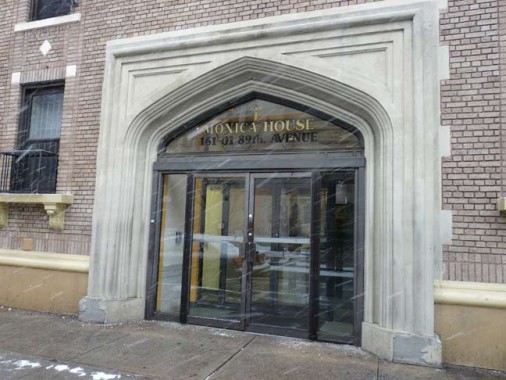
The sisters’ residence, or cenacle, can still be seen next door on 89th Avenue, and the apartment house across the avenue is marked with the insignia of the Catholic Charities of Brooklyn and Queens.
Keeping it in an ecclesiastic vein, the Presentation of the Blessed Virgin Mary Roman Catholic Church at Parsons Boulevard and 89th Avenue, built in 1922, features some extraordinary entablatures above its secondary entrances depicting the three members of the Holy Trinity. According to the parish website, the congregation was organized in 1886, and the first church on the site constructed in 1894.
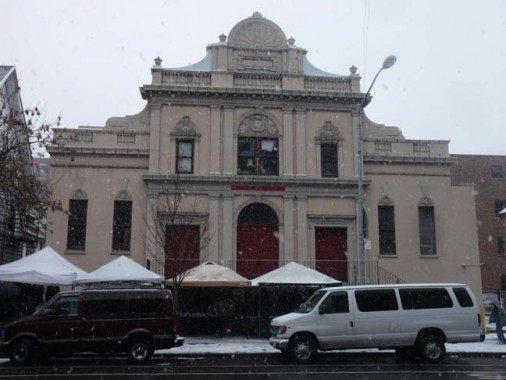
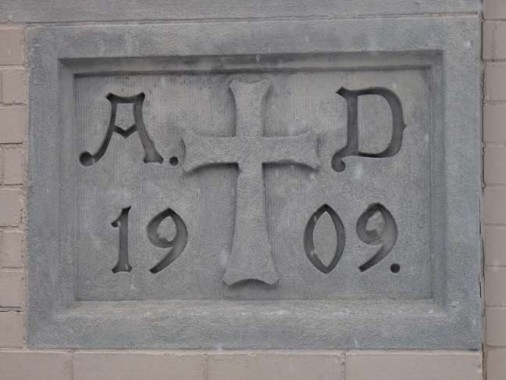
What I take as the Presentation of the B.V.M. parish hall is a few doors down Parsons Boulevard (let me know if I’m wrong). The lavishly baroque building is cornerstoned 1909.
Oddly, the church is named for an incident not recounted in the accepted Gospels:
The feast is associated with an event recounted not in the New Testament, but in the apocryphal Infancy Narrative of James. According to that text, Mary’s parents, Joachim and Anne, who had been childless, received a heavenly message that they would have a child. In thanksgiving for the gift of their daughter, they brought her, when still a child, to the Temple in Jerusalem to consecrate her to God. Later versions of the story (such as the Gospel of Pseudo-Matthew and the Gospel of the Nativity of Mary) tell us that Mary was taken to the Temple at around the age of three in fulfillment of a vow. Tradition held that she was to remain there to be educated in preparation for her role as Mother of God. wikipedia


The building on the west side of Parsons Boulevard at 89th Avenue has a complicated history. It opened in 1930 as the Central Library Building of Queens Public Library (the current building is on Merrick Boulevard between 89th and 90th Avenues, a few blocks east). In 1970, it was adapted as Queens County Family Court, and the inscription placed there that year on the pediment still remains. The Family Court mnoved to a new building on Jamaica Avenue across from Rufus King Park (see below) in 2002, and the old Family Court was converted to luxury and “affordable” housing, with a new building constructed behind the old facade.
The elaborate bronze lamps on the front staircase, as well as escutcheons on the facade, hark back to the building’s days as a library, with symbols of learning: an owl, an open book, a classic lantern. Animal heads adorn the lamps’ bases.

All Nations Apostolic Tabernacle, 90th (Rufus King) Avenue and Parsons Boulevard. Information is sketchy on this building, which according to the NY Times dates to 1869. The current church was instituted in 1993 at the YMCA across the boulevard (see below) and moved here at a later date.
I’m sure a ForgottenFan has information on what church it had been.
Jamaica’s branch of the Young Men’s Christian Association, a stolid 1927 brick building, is across the street from the ANAT. The cornerstone features the early YMCA logo, with a equal-sided triangle standing in for mind, body and spirit, and an open Bible inscribed with John 17:21: “That all of them may be one, Father, just as you are in me and I am in you. May they also be in us so that the world may believe that you have sent me.”
The YMCA was founded by George Williams, a draper, who was typical of the young men drawn to the cities by the Industrial Revolution. He and his colleagues were concerned about the lack of healthy activities for young men in major cities; the options available were usually taverns and brothels. On 6 June 1844, he founded the first YMCA in London with the purpose of “the improving of the spiritual condition of young men engaged in the drapery, embroidery, and other trades.” wikipedia
The organization now has over 58 million members, who either reside at YMCA facilities, acquire athletic training and workouts, and it’s the place where millions who don’t live near the water have learned to swim.


The Grace Church Memorial House was constructed in 1912, according to a NYC Landmarks Report, “to meet the needs of the growing congregation for a meeting place and social center. The Memorial Hall included a gymnasium, an auditorium, meeting rooms and offices. These facilities were needed as the role of the church expanded from solely providing religious services to include educational and social services. On the 250th anniversary of the founding of the church, the Memorial Hall was being used by 21 different organizations. Designed by the prominent architectural firm of Upjohn and Conable in Tudor Gothic Revival style to complement the church building, the brick building’s symmetrical massing and flanking wings add a picturesque element to the church complex.”
Located at 90th Avenue and Parsons at the back of the Grace Churchyard, the building was left unceremoniously unlandmarked by the LPC. It’s presently home to the Grace Church offices and is the site for community meetings.

From the 1910s to the 1970s we go: across the street from the Grace Memorial House is a typical parking garage. The next attractive parking lot built after 1950 will be the first one.

There are several state government offices on the east side of Parsons Boulevard north of Jamaica Avenue and one of them has an area with an overhang, where baby carriages were once parked. Did they have locks, like bikes?
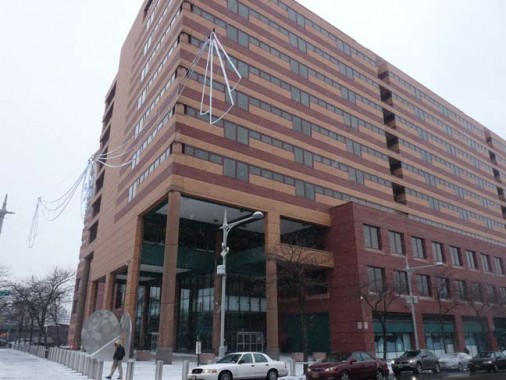
The Joseph P. Addabbo Federal Social Security Administration Building, completed in 1988 (the same year the nearby Archer Avenue subway line finally replaced the Jamaica Avenue El after 11 years). With its alternate brown shading, which reflects the sun nicely, it isn’t the Ministry of Love that some federal buildings occasionally resemble.
With U.S. Senator Daniel Patrick Moynihan and Congressman Joseph P. Addabbo , Greater Jamaica Development Corporation assisted in the site selection, development coordination and urban design of the new home for the Social Security Administration’s Northeastern Program Service Center. The building, with 1 million square feet of floor space and employment of 3,000, opened in 1989. It serves New York State, New Jersey, Puerto Rico, and the Virgin Islands—which comprise U.S. Region II. Greater Jamaica Development Corporation
GRACE CHURCH.
This high-steepled church on Jamaica Avenue off Parsons Boulevard dates to 1862, replacing an earlier edifice dating to 1822 that burned the year before. The parish itself goes back to 1702 and the surrounding churchyard to 1734. Rufus King and his descendants were enthusiastic parishioners. His son, NY State Governor John King, contributed a marble baptismal font to the old church in 1847 and an organ to the new in 1862; later, the family provided an Oxford Bible, 4 prayer books and a bishop’s chair.
History of Grace Church [Historic Grace]
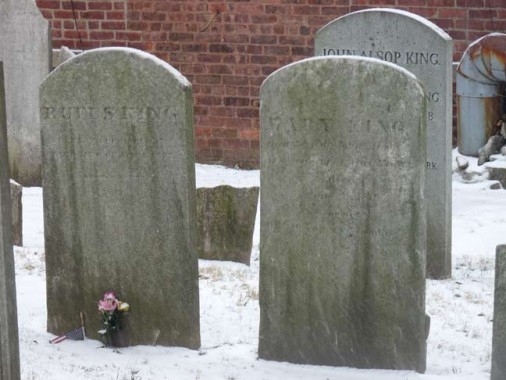
Rufus and Mary King are buried on the cemetery’s west side at Jamaica Avenue, with their son, John Alsop King, behind them.
The Grace churchyard, which goes back to the foundation of the parish in 1702, is a respite from the weekday buzz of downtown Jamaica. The older stones can be found on either side of the front entrance.
It’s not the oldest cemetery in Jamaica: Prospect Cemetery on 159th Street, south of the Long Island Rail Road, now maintained by York College with the assistance of the Prospect Cemetery Association, was established in 1688.
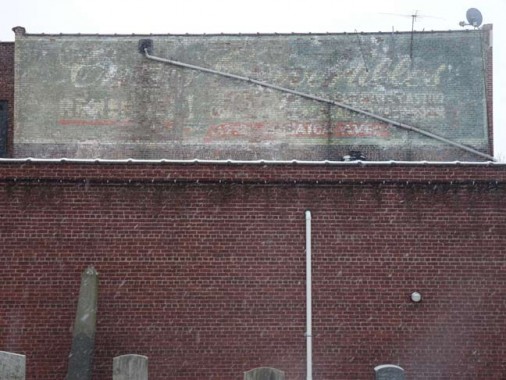
A Castro Convertible ad was painted on a wall on 90th Road facing the cemetery and can only have meant to be read by mourners. Of course, I remember the Castro Convertible radio jingle…

Grace Court, which kept its name and wasn’t given a number, borders the churchyard on the west side and features some charming buildings.

During a neighborhood makeover in the early 1980s, Jamaica Avenue was given a red brick paved sidewalk. However, a few blocks away, there are a couple of avenues with vintage red brick road paving. I’ll show those in a future installment.
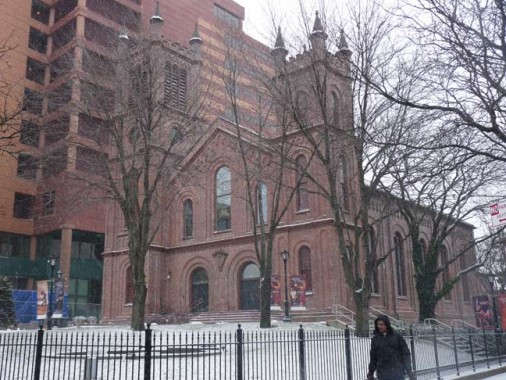
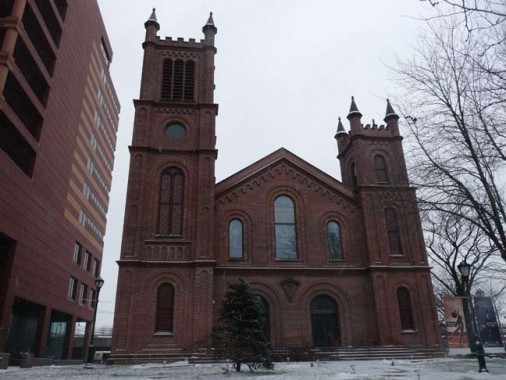
The First Reformed Dutch Church of Jamaica was established in 1702 for Dutch merchants who settled near Jamaica. An octagonal-shaped building with a steeply-pitched roof topped by a cupola and weathervane was erected in 1716. Church history places the original building at about Jamaica Avenue and 162nd Street.
In 1833, the congregation relocated to Jamaica Avenue and 153rd Street where the second church was built. The Georgian-style building included a tower that was topped by a cupola and weathervane. This church building burned In 1857.
The third church was built from 1858-59 on the same site. Designed and constructed by master carpenter Sidney J. Young (a member of the congregation), with the assistance of master mason Anders Peterson, the building with its asymmetrical towers, round-arched openings, and corbel tables shows a sophisticated use of brickwork and reflects the growing popularity and influence of the architectural style known as “Rundbogenstil.” The church was regarded as one of the finest Early Romanesque Revival churches in New York. A plaque at its entrance notes that it was ”dedicated to the worship of the triune God October 6th 1859.” This building served the church for more than a century, but by the 1960s downtown Jamaica began a long period of decline. This building was designated in 1966 by the New York City Landmarks Preservation Commission, and in 1980 was listed in the National Register of Historic Places. The old church fell into disrepair was ultimately condemned as part of an urban renewal project. The congregation moved out in the mid-1980s and, after a few years in a temporary base, the settled into its present home at 159-29 90th Avenue.
The old church building on Jamaica Avenue was acquired and rehabilitated for use as the Jamaica Center for Arts and Learning. New York City Chapter, American Guild of Organists
From the WPA Guide to New York, first published in 1939 and still considered a bible for NYC architecture aficionados:
“The mansion was built for the most part before 1750, It was purchased by King in 1806, and remained in possession of the family until 1896, when the village of Jamaica acquired the house and surrounding park of eleven and a half acres. King Mansion has a harmonious combination of Dutch and Georgian Colonial motifs. The main wing of three stories and an attic, covered by a gambrel roof, has an entrance portico supported by fluted Doric columns. The two-story kitchen and servants’ wing, originally a short distance from the house, has a gabled roof and covered porch. The only rooms open to the public [as of 1939] are those off the main wing, containing furniture and relics presented by Colonial societies.”
More from Jamaica anon…
12/15/13


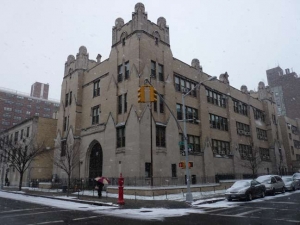

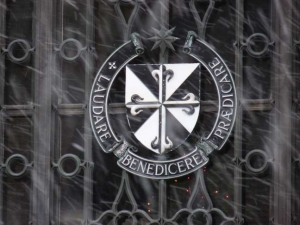
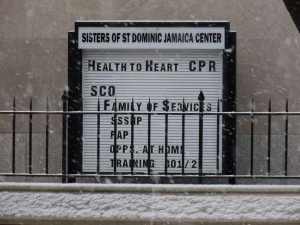

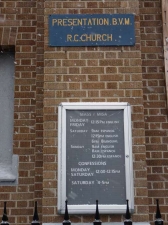

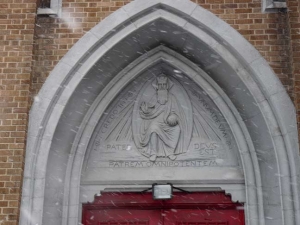

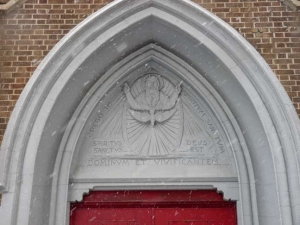
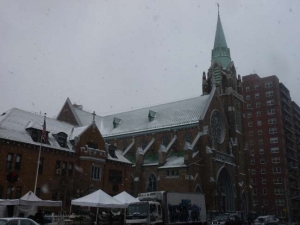
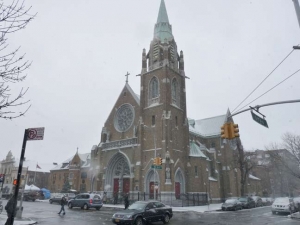
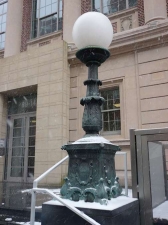
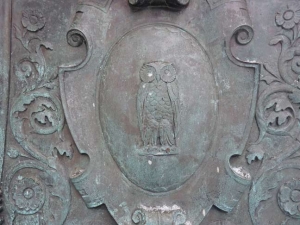

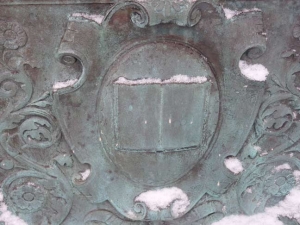
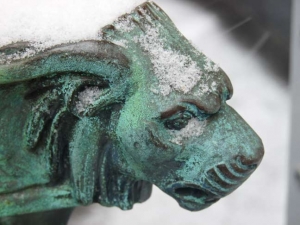
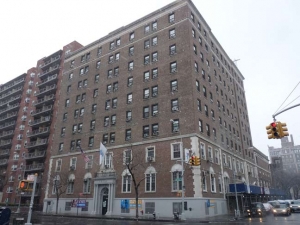
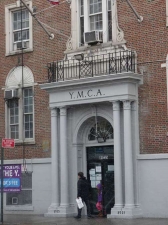
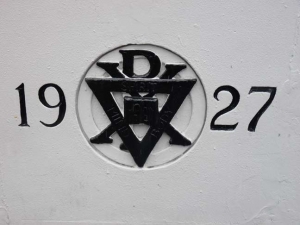
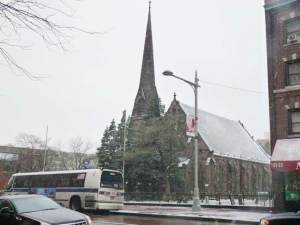
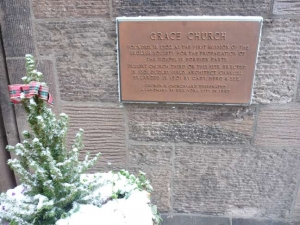
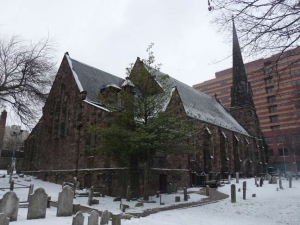
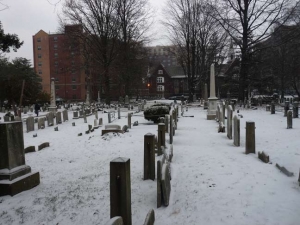
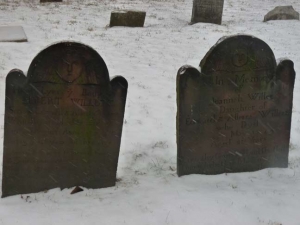

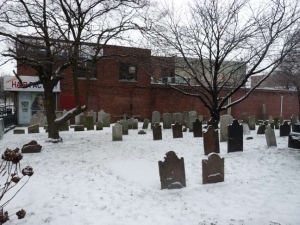
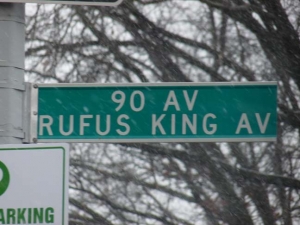
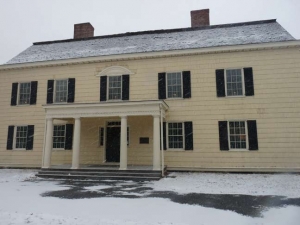
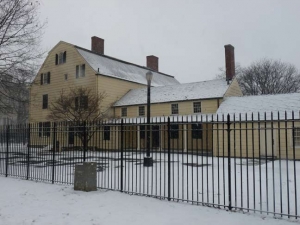

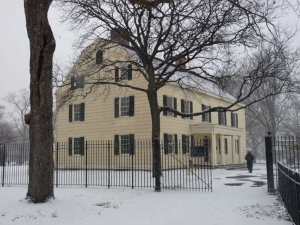
16 comments
Very interesting tour of Jamaica. The only buildings of note that I remember were the Queens(borough) Public Main Library and the Jamaica High School built in 1927. The Rufus King Manor house and grounds are really gems for the community, as are the nineteenth century churches. I think a great improvement for the area was the removal of the Jamaica Avenue el and supplanting it with the Archer Avenue subway line. The only old buildings which seem out of context for the time they were built, seem to be the attached brick row houses which have an Italianate air to them. I would have thought that in pre-1920 Jamaica, that the majority of residential structures would have been detached one family frame houses, rather than row houses which seem more at home in parts of western Queens such as Ridgewood, but I guess it’s apparent that they existed there as well.
As a 1960 Dominican graduate, this was a delightful tour! That school will always have a piece of my heart, and the caring and loving Dominican sisters have an even bigger piece of it. God bless them, each one…..and my beautiful classmates!
Ringo Starr’s wife Barbara Bach attended Dominican Commercial as then named Barbara Goldbach.
http://en.wikipedia.org/wiki/Barbara_Bach
Literally, a walk down memory lane for me. In the early ’80’s this part of Jamaica became an Oppurtunity Zone which meant that there were tax incentives for those who did business there. Public sector offices (SSA, numerous NY State agencies, & the NYPD crime lab) set up shop to serve as an anchor for private sector development. This translates to patronage & corruption (check the history of Gertz Plaza). In 1985 the NY State agency that I worked for relocated to Gertz. Twenty years later & a mere 4 years after an expensive renovation/tech upgrade it went back to Manhattan. I had retired the year before but I was invited to the decommissioning party. I showed my colleagues pictures of the home I had just purchased in AZ & said goodbye to them & Jamaica. Subsequently, the NY Post revealed the sad truth about politics as usual in NY. The worst part is that although there have been numerous convictions, with more to come, the NY state legislature remains a pit of despair. However, thanks for the memories, Kevin.
How wonderful to see the old sights that I once knew so well. Interestingly, it was once possible for children as young as nine or ten to wander unaccompanied all throughout the neighborhood depicted here, and that’s only fifty years ago, when I was a Jamaica kid myself! I made first communion and confirmation (and first wedding) in Presentation Church, attended Presentation school and later both Dominican Commercial and then Jamaica High Schools. I went to story hour at the old Library, and learned to swim at the YMCA! Forgotten Queens? Not by those who grew up there! Thanks for the memories! Helen (Las Vegas)
” The next attractive parking lot built after 1950 will be the first one.”
That was classic.
Thanks! It’s a miracle that anything in Jamaica survived the 1970s. I was there and saw the whole thing unfold.
A great walk down memory lane. In 1985 the NY state agency where I was employed moved to Gertz Plaza from lower Manhattan. This was part of a federal economic development scheme which over a period of over 20 years would lead to many indictments, convictions, & a suicide (borough president Donald Manes in 1986, I believe). In 2005, four years after an expensive renovation/tech upgrade, the agency returned to lower Manhattan. I was retired by then. I was invited to the decommissioning party; I brought along photos of the house I just purchased in AZ to show my colleagues. I said goodbye to them & Jamiaca. Thanks for the memories. Thank you nypost.com for covering the Queens Hall of Shame.
I used to work at Monica House (161-01 9th Ave.) in the early ’90’s. I often walked around on my lunch hour and admired the neighborhood. Thanks for the trip down memory lane.
Interesting side note, I was told that Monica House had been the Bristol Hotel in a previous life. A house of ill repute, apparently….LL Cool J wrote a song in the ’80’s called the “Bristol Hotel”.
I have always wondered as to where the two old brassCivil War cannons, made by Revere, ended up. They stood in front of the mansion like forever. A number of years back, they were removed because they were Civil War era and not in keeping with the early dating of the house. Nobody seems to know who got them.
Here’s 160 St in 1916 (from The Queens Chronicle, 12/19/13:
http://www.qchron.com/qboro/i_have_often_walked/downtown-jamaica-one-century-ago/article_d57eee54-cbfb-5ae1-8a27-4fbe63117c1b.html
The photos of King Manor brought back many memories. I remember it being painted white. In the early 1960’s I would cut through the park on my way to visit my mom who was in Mary Immaculate Hospital. I remember the elevated train along Jamaica Ave. and Gertz department store. Does anyone know how I can obtain a photo of the World War II Honor Roll sign erected on Metropolitan Ave (near Grover Cleveland High School). My mom would take me there to point out my Dad’s name.
Is there an image of the Jamaica High Beaver mascot?
Searching for one in Royal Red and Loyal Blue.
Back in the 50’s and 60’s my Mother would take us and have a picnic on the lawn . Good times back then.
Great article. I happened upon it because I just read that the Dominican Commercial school was sold. I lived in Jamaica from 1986-2010. I was around when Kings Park was renovated, the Social security building and the Archer Ave stations opened, when the LIRR open the Air train to JFK, when Mary Immaculate Hospital closed which was in front of Kings Park, the Colliseum was renovated and opened. The Gap and Old Navy building with the movie theater and Bally’s gym we’re soon built. I watched them build that building connected to the old family court house. So many memories. This article took me back. Thanks again.
Was born in Mary Immaculate hospital. Got vaccinated at Dept. of Health on Parsons. Blvd. Took driver’s Ed. at Dominican Commercial. Got my GED at the Queens Satellite High School for Opportunity. Shopped at May’s Macy’s Woolworths and Gertz, Went to the movies at the Valencia and Aldens and hung out at Goose Pond Park. Those were the days my friend…